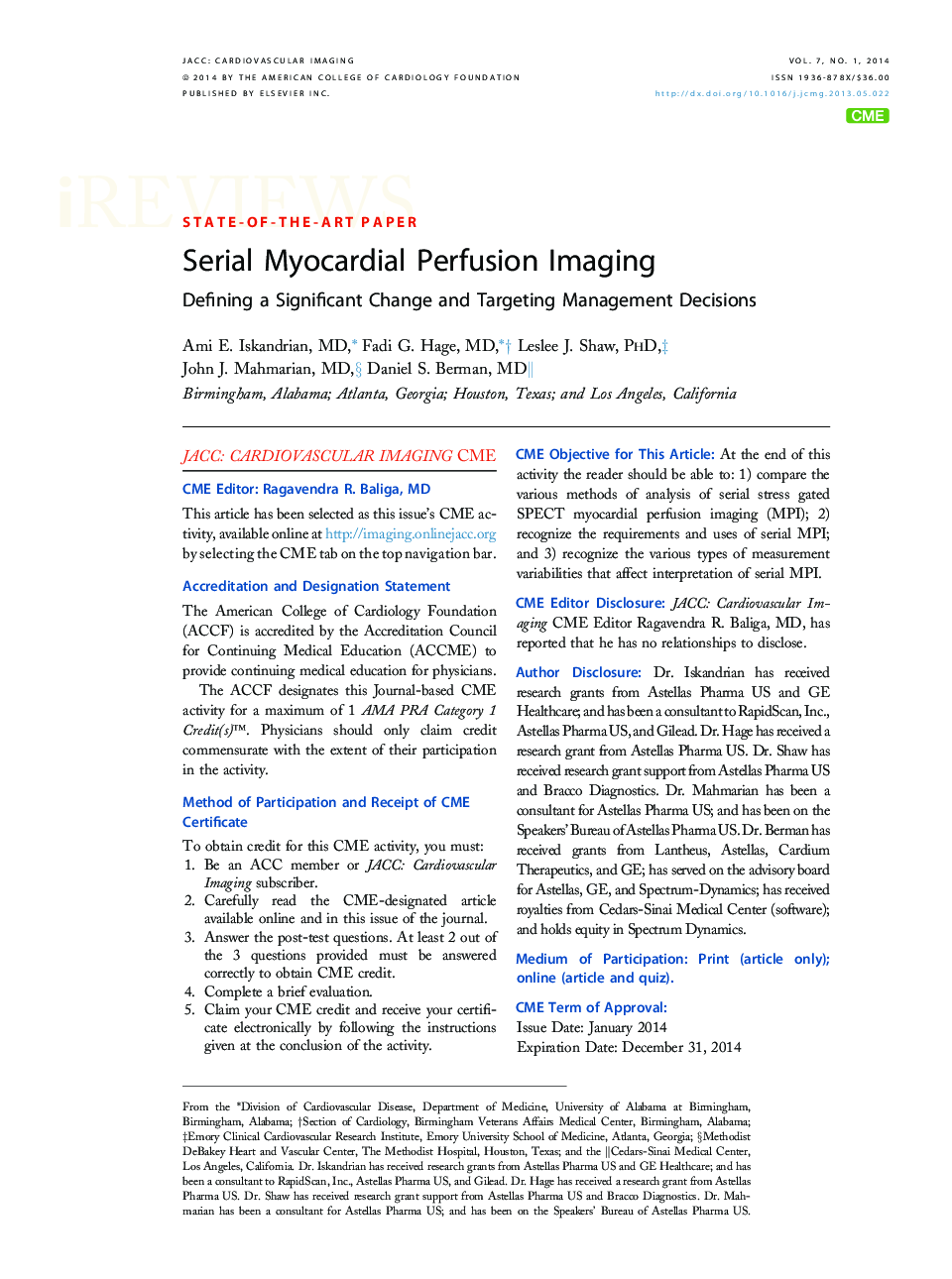| Article ID | Journal | Published Year | Pages | File Type |
|---|---|---|---|---|
| 2938140 | JACC: Cardiovascular Imaging | 2014 | 18 Pages |
Myocardial perfusion imaging (MPI) with gated single-photon emission tomography provides important information on the extent and severity of myocardial perfusion abnormalities, including myocardial ischemia. The availability of software for automated quantitative assessment of myocardial perfusion in an objective and more reproducible manner than visual assessment has allowed MPI to be particularly effective in serial evaluation. Serial testing using MPI is widely used in guiding patient care despite the lack of well-defined appropriateness use criteria. This should not be surprising because ischemic heart disease is a life-long malady subject to dynamic changes throughout its natural course and particularly following man-made interventions that may improve or worsen the disease process, such as medical therapy and coronary revascularization. Serial MPI has filled an important clinical gap by providing crucial information for managing patients with changes in clinical presentations or in anticipation of such changes in patients with stable symptoms. In the research arena, serial MPI has been widely applied in randomized controlled trials to study the impact of various medical and interventional therapies on myocardial perfusion, as well as the relative merits of new imaging procedures (hardware and/or software), radiotracers, and stressor agents. Serial testing, however, unlike initial or 1-time testing, has more stringent requirements and is subject to variability because of technical, procedural, interpretational, and biological factors. The intrinsic variability of MPI becomes important in interpreting serial tests in order to define a true change in a given patient and to guide clinical decision making. The purpose of this first comprehensive review on this subject is to illustrate where serial MPI may be useful clinically and in research studies, and to highlight strategies for addressing the various issues that are unique to serial testing in order to derive more valid and robust data from the serial scans.
